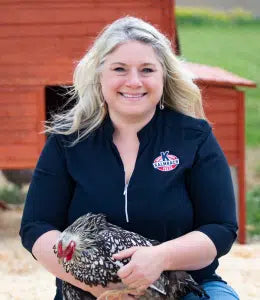7 Items to Include in Your Chicken First-Aid Kit

Keeping chickens is a wonderful practice, and the entertainment that they provide is priceless. The vast majority of the time, keeping chickens is pretty easy. When provided with a good quality, complete feed and access to a safe and dry coop, they are generally very easy keepers. However, anytime that you are keeping live animals, there is always a chance that something can go wrong.
The Veterinarian Conundrum
Any time that an animal is sick or suffering, you should always try to seek assistance from a qualified veterinarian. However, most of us are well aware that finding a veterinarian that will see poultry is a lot easier said than done. Many veterinarians aren’t comfortable seeing poultry, or they will see your birds but don’t have a lot of experience in diagnosing and treating poultry. If you have a great vet that is great with chickens, hold on to them for dear life! With that being said, none of the information below is meant to replace the knowledge and expertise of a qualified veterinarian. A good veterinarian is your best tool when dealing with sick or injured animals, including poultry.
What Are Some Common Tools to Help Treat Injuries and Illnesses in Poultry?
Please see below for a list of 7 items you should include in your chicken first aid kit:
First Aid Supply #1 – Vetericyn or Similar Wound Care Spray
Wounds to the skin are very common injuries in poultry flocks. Accidents, over-eager roosters, predator attacks, and pecking from coop mates can all result in cuts and/or tears to the skin. A good quality wound care spray can help keep these minor injuries from getting infected while the bird heals.
First Aid Supply #2 – Epsom Salts
Bumblefoot is a rather common injury in poultry. Bumblefoot occurs when small cuts or scrapes in the foot pad become infected. If a bird has bumblefoot, they will often limp and the pad of their foot will become inflamed. Soaking the injured foot in warm water with Epsom salts is one of the primary ways to treat bumblefoot.
First Aid Supply #3 – Vet Wrap and Gauze
Many injuries, including those mentioned above, may require the area to be covered and protected while it heals. Vet wrap is an excellent tool to keep in your chicken first aid kit. The self-adhesive nature of the wrap helps keep it in place and allows it to be easily changed if it becomes wet or dirty.
First Aid Supply #4 – Popsicle Sticks or Craft Sticks
This one may seem odd but popsicle sticks can be used as splints to keep an injured leg or wing in the proper position while you seek veterinary treatment. Coupled with the vet wrap listed above and some help from your veterinarian, serious injuries to legs and wings can be stabilized so that proper healing can take place.
First Aid Supply #5 – Antibiotics Recommended by a Veterinarian
Antibiotics are a very useful tool for treating a number of illnesses in poultry. Poultry can get infections from injuries. They can also get respiratory, reproductive, or intestinal infections from a variety of diseases and illnesses. Antibiotics should only be used after consultation with a veterinarian. It is very important to make sure you are using the correct antibiotic for your particular challenge. In fact, because of the Food Safety Modernization Act of 2010, many antibiotics that we used to easily find on store shelves are only available now with a Veterinary Feed Directive (VFD), which must be written by a veterinarian and is very similar to a prescription.
First Aid Supply #6 – Monistat or Miconazole
Yes, chickens can get yeast infections. Vent Gleet and Sour Crop are common yeast infections in chickens. Common signs of Vent Gleet include white discharge from the vent and foul odor. If you see signs of Vent Gleet in your chickens, an EXTERNAL treatment with Miconazole cream applied to the skin around the vent can help. As you should notice, I highlighted “external” treatment. Suppositories should not be used and you should not try to apply Miconazole inside the vent of the chicken. Always consult with your veterinarian before using any internal treatment options.
First Aid Supply #7 – Cat Carrier or Dog Crate
You should always have a clean cat carrier or dog crate available to use as an isolation area. In many cases, you may need to isolate a sick or injured bird from the rest of your flock. If I am nursing an injury, I prefer to keep the injured bird in a separate crate but still in the coop with the rest of the flock. Chickens are flock animals, so keeping them with the rest of their flock can help reduce stress and make re-introduction easier. However, if you are treating a contagious illness, then you will definitely need to isolate away from the rest of the flock.
